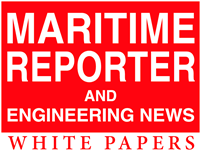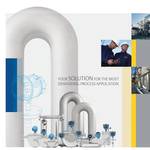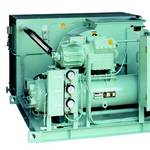
COSMODYNE BOIL-OFF GAS MANAGEMENT SYSTEMS
Cosmodyne’s shipboard ready systems automatically control boil-off gas generated from anystorage tank containing LNG or other cryogenic liquids. The system works with tanks in most applications including pressurized tanks or those operated at atmospheric pressures.
Cosmodyne offers two boil-off gas options that utilize a simple nitrogen based refrigeration cycle. The first option sub-cools a stream of LNG that is passed through a client’s spray header to collapse pressure. The second option re-liquefies the boil-off gas and the resulting LNG stream returns to the client’s tank.
Founded in 1958, Cosmodyne is a leading manufacturer of cryogenic plants with more than 450 placed in operation around the globe. Cosmodyne natural gas liquefiers have been used to provide LNG fuel for high horsepower uses like marine, rail, mining, trucking, and oilfield applications, virtual pipelines, and utility peak shaving. Cosmodyne is part of the Cryogenic Industries family of companies which include ACD, LLC and Cryoquip, LLC.
For more information, visit us at www.cosmodyne.com.

Accurate, on-the-spot measurement of marine bunkering is critical for both cost control and relationship management. The Micro Motion® Certified Marine Bunker Measurement Solution (CBMS) provides highly accurate data plus a bunker ticket that is available immediately after the bunker is complete. Depending on the implementation, the bunker measurement is certified by Nederlands Meetinstituut (NMi), the notified body for testing to the guidelines of the European Instruments Directive (MID) and Issuing Authority for OIML (International Organization for Legal Metrology). The Micro Motion meter meets the OIML standard R117-1 and the overall solution meets MID Directive 2004/22/EC Annex MI-005. During a meter trial, the Micro Motion system is frequently compared to the existing volumetric system, or to the volumetric system used by the other party. The comparison typically yields discrepancies that mistakenly call the new system into question. This white paper provides a brief overview of the Micro Motion Certified Marine Bunker Measurement Solution, then examines all the sources of measurement discrepancy and demonstrates that the apparent issues can be caused by a combination of the inherent uncertainties in volumetric measurement and inconsistent bunkering procedures. When appropriate bunkering procedures are followed, the Micro Motion system provides superior accuracy and should be used as the standard. The use of mass flowmeters (MFMs) is becoming standard practice in the transfer of marine fuel. The Marine Port Authority (MPA) of Singapore, which represents a large share of the global bunkering market, announced in April 2014 that the use of MFMs would be mandatory by the start of 2017. MFMs reduce the number of quantity disputes, eliminate time spent performing sounding operations before and after the delivery, and provide suppliers with powerful diagnostic tools for improving their processes. In addition, the MFM can provide the user with additional process metrics that help to prove the accuracy of their delivery quantities as well as their product quality. It is easy to see why MFMs are becoming the industry standard. ExxonMobil Marine Fuels & Lubricants was the first bunker fuel supplier in the marine industry to use a MFMS that has been approved by the Maritime and Port Authority of Singapore for bunker fuel deliveries.

In Japan, there is a maritime industry cluster of businesses, which include ship owners, shipbuilding companies and ship machinery and equipment makers. New products have been developed, while others have been improved within the framework of this maritime cluster. Japan has completed many vessels of a wide variety of types for years. Boasting high levels of performance and quality, Japan-built ships are highly rated by ship owners worldwide.